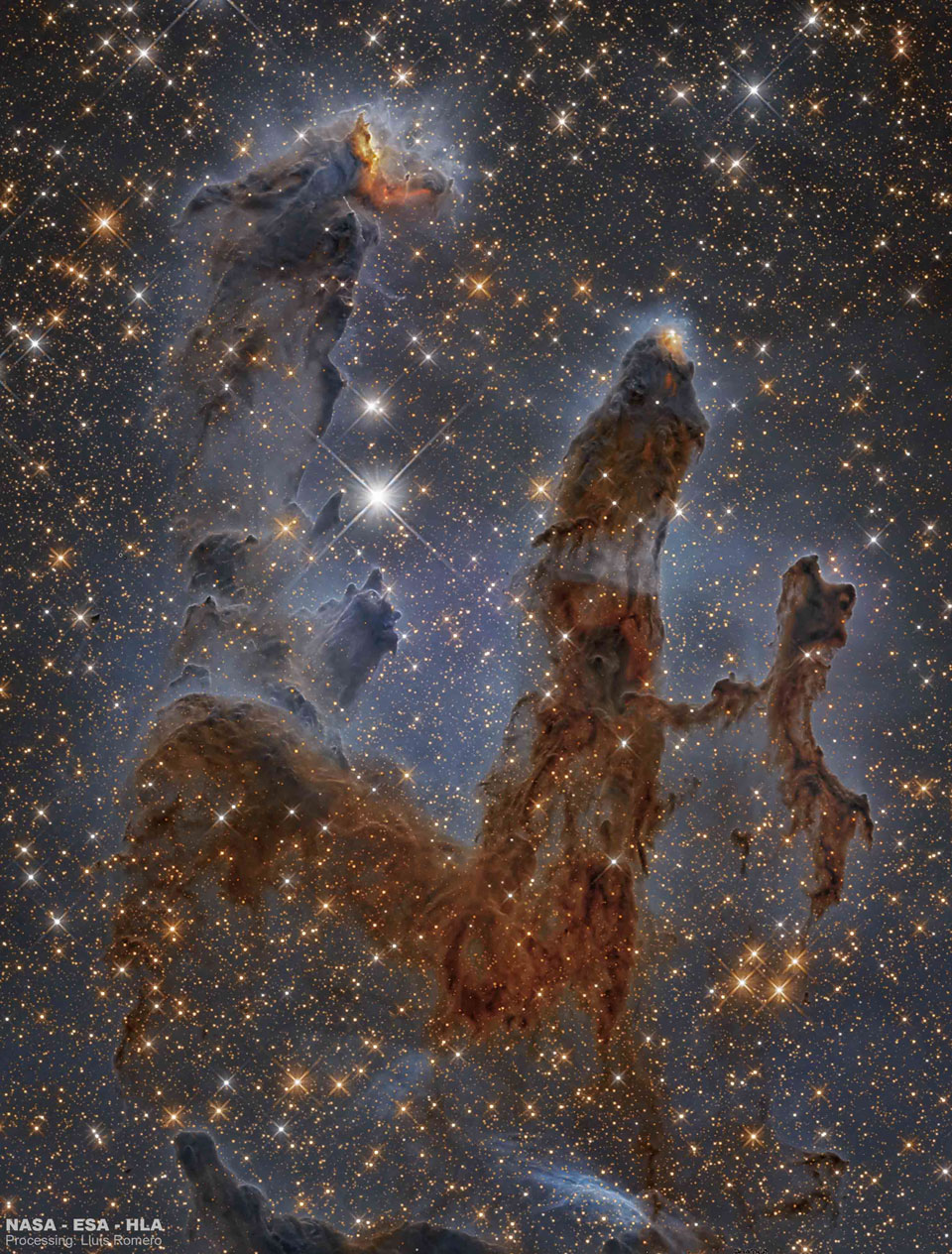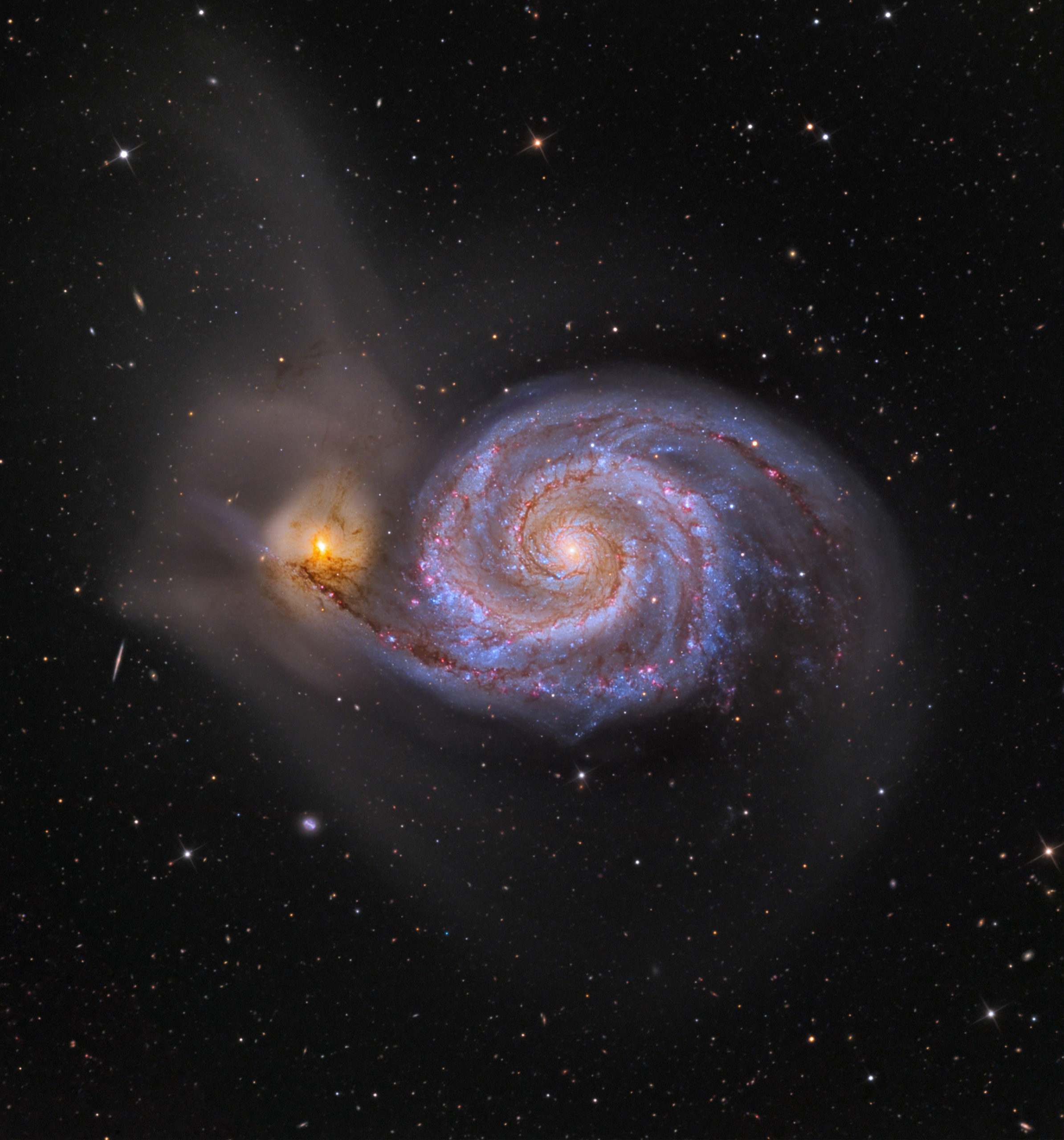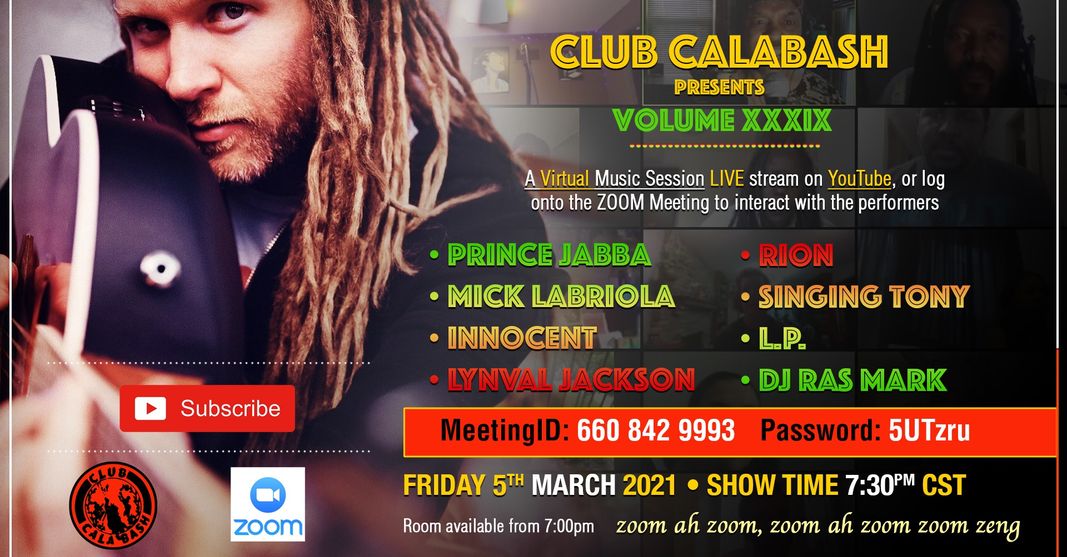Blog
Newborn stars are forming in the Eagle Nebula. Gravitationally contracting in pillars of dense gas and dust, the intense radiation of these newly-formed bright stars is causing surrounding material to boil away. This image, taken with the Hubble Space Telescope in near infrared light, allows the viewer to see through much of the thick dust that makes the pillars opaque in visible light. The giant structures are light years in length and dubbed informally the Pillars of Creation. Associated with the open star cluster M16, the Eagle Nebula lies about 6,500 light years away. The Eagle Nebula is an easy target for small telescopes in a nebula-rich part of the sky toward the split constellation Serpens Cauda (the tail of the snake).

Christopher Taylor White (born 7 March 1943) is an English singer, songwriter, musician, and record producer.
White’s music career spans more than 50 years. He came to prominence in the mid-1960s as the bass guitarist and occasional lead vocalist of the English rock band The Zombies. White is one of the main composers of the Zombies’ music, and made major lyrical contributions to the band’s songs. He was inducted into the Rock and Roll Hall of Fame in 2019.
more...Roy Williams MBE (born 7 March 1937, Salford) is an English jazz trombonist.
Williams learned piano as a youth and did not play the trombone until he was 18. He served his National Service in the military in the late 1950s, then joined the trad jazz group of trumpeter Mike Peters and worked with Terry Lightfoot in the early 1960s.
In 1965 Williams became a member of Alex Welsh‘s band, which accompanied Ruby Braff, Wild Bill Davison, and Bud Freeman. Williams remained with Welsh until 1978, also collaborating with bandmate John Barnes in a side ensemble. He then worked with Humphrey Lyttelton (1978–1983), and in 1980 played with the Pizza Express All Stars and Benny Waters.
more...Louis Albert Cottrell Jr. (March 7, 1911 – March 21, 1978) was a Louisiana Creole jazz clarinetist and tenor saxophonist. He was the son of the influential drummer Louis Cottrell, Sr., and grandfather of New Orleans jazz drummer Louis Cottrell. As leader of the Heritage Hall Jazz Band, he performed at the famous Carnegie Hall in 1974.
Louis Cottrell was born into an upper-class Creole musical family in New Orleans. His father, Louis “Old Man” Cottrell, Sr., was a famed drummer, and cornetist Manny Perez was his godfather. The young Cottrell grew up around such great musicians as Barney Bigard, John Robichaux, and A.J. Piron. Cottrell studied clarinet under Lorenzo Tio Jr. and Bigard. He began his career in the 1920s with the Golden Rule Orchestra, and then in 1925 played with Paul “Polo” Barnes.
more...Joseph Maurice Ravel (French: [ʒɔzɛf mɔʁis ʁavɛl]; 7 March 1875 – 28 December 1937) was a French composer, pianist and conductor. He is often associated with impressionism along with his elder contemporary Claude Debussy, although both composers rejected the term. In the 1920s and 1930s Ravel was internationally regarded as France’s greatest living composer.
Born to a music-loving family, Ravel attended France’s premier music college, the Paris Conservatoire; he was not well regarded by its conservative establishment, whose biased treatment of him caused a scandal. After leaving the conservatoire, Ravel found his own way as a composer, developing a style of great clarity and incorporating elements of modernism, baroque, neoclassicism and, in his later works, jazz. He liked to experiment with musical form, as in his best-known work, Boléro (1928), in which repetition takes the place of development. Renowned for his abilities in orchestration, Ravel made some orchestral arrangements of other composers’ piano music, of which his 1922 version of Mussorgsky‘s Pictures at an Exhibition is the best known.
A slow and painstaking worker, Ravel composed fewer pieces than many of his contemporaries. Among his works to enter the repertoire are pieces for piano, chamber music, two piano concertos, ballet music, two operas and eight song cycles; he wrote no symphonies or church music. Many of his works exist in two versions: first, a piano score and later an orchestration. Some of his piano music, such as Gaspard de la nuit (1908), is exceptionally difficult to play, and his complex orchestral works such as Daphnis et Chloé (1912) require skilful balance in performance.
Ravel was among the first composers to recognise the potential of recording to bring their music to a wider public. From the 1920s, despite limited technique as a pianist or conductor, he took part in recordings of several of his works; others were made under his supervision.
more...This FLAMINGOS-2 near-infrared image details part of the magnificent Swan Nebula (M17), where ultraviolet radiation streaming from young hot stars sculpts a dense region of dust and gas into myriad fanciful forms. M17 lies some 5,200 light-years distant in the constellation Sagittarius and is one of the most massive and luminous star-forming region’s in our Galaxy. It is also one of the most studied.

David Jon Gilmour CBE (/ˈɡɪlmɔːr/ GHIL-mor; born 6 March 1946) is an English musician who was a member of rock band Pink Floyd. He joined as guitarist and co-lead vocalist in 1968 shortly before the departure of founder member Syd Barrett. Pink Floyd achieved international success with the concept albums The Dark Side of the Moon (1973), Wish You Were Here (1975), Animals (1977), and The Wall (1979). By the early 1980s, they had become one of the highest-selling and most acclaimed acts in music history; by 2012, they had sold more than 250 million records worldwide, including 75 million in the United States. Following the departure of Roger Waters in 1985, Pink Floyd continued under Gilmour’s leadership and released three more studio albums.
Gilmour has produced a variety of artists, such as the Dream Academy, and has released four solo studio albums: David Gilmour, About Face, On an Island, and Rattle That Lock. He is also credited for bringing singer-songwriter Kate Bush to public attention. As a member of Pink Floyd, he was inducted into the US Rock and Roll Hall of Fame in 1996, and the UK Music Hall of Fame in 2005. In 2003, Gilmour was made a Commander of the Order of the British Empire (CBE). He was awarded with the Outstanding Contribution title at the 2008 Q Awards. In 2011, Rolling Stone magazine ranked him number 14 in their list of the greatest guitarists of all time. He was also voted number 36 in the greatest voices in rock by Planet Rocklisteners in 2009.
Gilmour has taken part in projects related to issues including animal rights, environmentalism, homelessness, poverty, and human rights. He has married twice and is the father of eight children.
https://www.youtube.com/watch?v=cT9EFRd4LBw
more...Flora Purim (born March 6, 1942) is a Brazilian jazz singer known primarily for her work in the jazz fusion style. She became prominent for her part in Return to Forever with Chick Corea and Stanley Clarke. She has recorded and performed with numerous artists, including Dizzy Gillespie, Gil Evans, Opa, Stan Getz, George Duke, Mickey Hart of the Grateful Dead, Santana, Jaco Pastorius, and her husband Airto Moreira.
In 2002, Purim was the recipient of one of Brazil’s highest awards, the 2002 Ordem do Rio Branco for Lifetime Achievement. She has been called “The Queen of Brazilian Jazz”.
more...Walter E. “Furry” Lewis (March 6, 1893 or 1899 – September 14, 1981) was an American country blues guitarist and songwriter from Memphis, Tennessee. He was one of the first of the blues musicians active in the 1920s to be brought out of retirement and given new opportunities to record during the folk blues revival of the 1960s.
Lewis was born in Greenwood, Mississippi. His birth year is uncertain. Many sources give 1893, the date he gave in his later years, but the researchers Bob Eagle and Eric LeBlanc suggest 1899, based on his 1900 census entry, and other sources suggest 1895 or 1898. His family moved to Memphis when he was seven. He acquired the nickname “Furry” from childhood playmates. By 1908, he was playing solo at parties, in taverns, and on the street. He was also invited to play several dates with W. C. Handy‘s Orchestra.
more...John Leslie “Wes” Montgomery (March 6, 1923 – June 15, 1968) was an American jazz guitarist. One of the most influential guitarists of the twentieth century, Montgomery was known for an unusual technique of plucking the strings with the side of his thumb and his extensive use of octaves, which gave him a distinctive sound.
Montgomery often worked with his brothers Buddy (Charles F.) and Monk (William H.) and with organist Melvin Rhyne. His recordings up to 1965 were oriented towards hard bop, soul jazz, and post bop, but around 1965 he began recording more pop-oriented instrumental albums that found mainstream success. His later guitar style influenced jazz fusion and smooth jazz.
Montgomery was born in Indianapolis, Indiana. According to NPR, the nickname “Wes” was a child’s abbreviation of his middle name, Leslie. The family was large, and the parents split up early in the lives of the children. Montgomery and his brothers moved to Columbus, Ohio, with their father and attended Champion High School. His older brother Monk dropped out of school to sell coal and ice, gradually saving enough money to buy his brother Wes a four-string tenor guitar from a pawn shop in 1935. Although Montgomery spent many hours with the guitar, he discounted this time later in life, saying he had to start over when he got his first six-string several years later,
Montgomery died of a heart attack on June 15, 1968, while at home in Indianapolis. His grandson is actor Anthony Montgomery, who played Travis Mayweather on Star Trek: Enterprise. On June 25, 2019, The New York Times Magazine listed Wes Montgomery among hundreds of musicians whose master tapes were destroyed in the 2008 Universal fire.
more...Howard McGhee (March 6, 1918 – July 17, 1987) was one of the first bebop jazz trumpeters, with Dizzy Gillespie, Fats Navarro and Idrees Sulieman. He was known for his fast fingering and high notes. He had on an influence on younger bebop trumpeters such as Fats Navarro.
Howard McGhee was raised in Detroit, Michigan. During his career, he played in bands led by Lionel Hampton, Andy Kirk, Count Basie and Charlie Barnet. He was in a club listening to the radio when he first heard Charlie Parker and was one of the earliest adopters of the new style, a fact that was disapproved by older musicians like Kid Ory.
In 1946–47, some record sessions for the new label Dial were organized in Hollywood with Charlie Parker and the Howard McGhee. The first was held on July 29, 1946. The musicians were Charlie Parker, Howard McGhee, Jimmy Bunn, Bob Kesterson, and Roy Porter. With Parker’s health near to collapse, he played “Max is Making Wax”, “Lover Man“, and “The Gypsy”
more...J. B. Lenoir /ləˈnɔːr/ (March 5, 1929 – April 29, 1967) was an American blues guitarist and singer-songwriter, active in the Chicago blues scene in the 1950s and 1960s.His surname, which is French, is sometimes pronounced as the French “L’n WAHR”, but he pronounced it “La NOR”. His given name simply was J. B.; the letters are not initials.
He was born in Monticello, Mississippi. Lenoir’s guitar-playing father introduced him to the music of Blind Lemon Jefferson, which became a major influence. During the early 1940s, Lenoir worked with the blues artists Sonny Boy Williamson II and Elmore James in New Orleans. He was later influenced by Arthur Crudup and Lightnin’ Hopkins.
In 1949, he moved to Chicago, where Big Bill Broonzy helped introduce him to the blues community. He began to perform at local nightclubs, with musicians such as Memphis Minnie, Big Maceo Merriweather, and Muddy Waters, and became an important part of the city’s blues scene. He began recording in 1951 for J.O.B. Records and Chess Records. His recording of “Korea Blues” was licensed to and released by Chess, as having been performed by J. B. and his Bayou Boys. His band included the pianist Sunnyland Slim, the guitarist Leroy Foster, and the drummer Alfred Wallace.
more...The Whirlpool Galaxy, also known as Messier 51a, M51a, and NGC 5194, is an interacting grand-designspiral galaxy with a Seyfert 2 active galactic nucleus. It lies in the constellation Canes Venatici, and was the first galaxy to be classified as a spiral galaxy. Its distance is estimated to be 31 million light-years away from Earth.
The galaxy and its companion, NGC 5195, are easily observed by amateur astronomers, and the two galaxies may be seen with binoculars. The Whirlpool Galaxy has been extensively observed by professional astronomers, who study it to understand galaxy structure (particularly structure associated with the spiral arms) and galaxy interactions.

More Posts
- Thornetta Davis
- Mike Hugg
- Manabendra Mukhopadhyay
- Russell Procope
- World Drumming Babatunde Olatunji
- Flamenco Fridays Lucía Beltrán y Francis Gómez
- Daily Roots Ja Man All Stars
- Cosmos NGC 7635
- Ian Anderson
- Leo Fender
- Chuck Israels
- Trudy Pitts
- World Music Kapela Niwińskich
- Daily Roots Bunny Wailer
- Robbie Robertson Memorial
- Rhythm Roots Workshop @ Memory Café Jewish Family and Children’s Service
- Cosmos Protostar L1527
- World Drumming Mamady Keïta & Eitetsu Hayashi
- Jack DeJohnette
- Butch Warren

